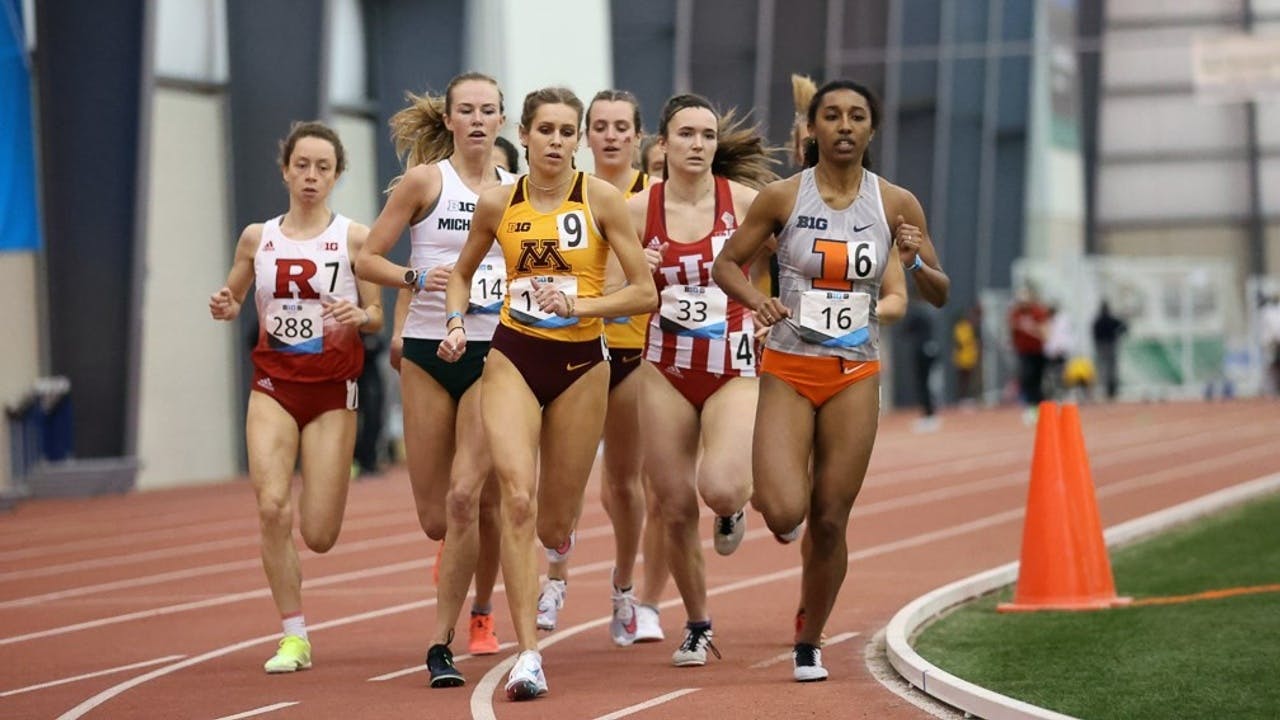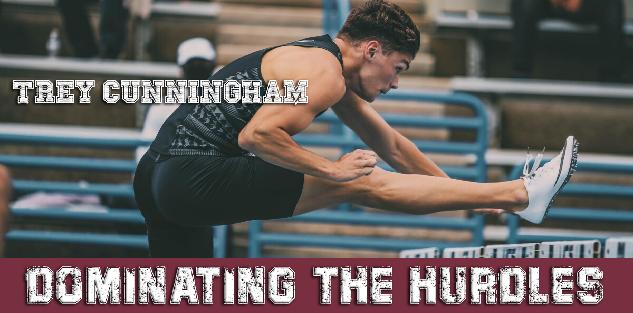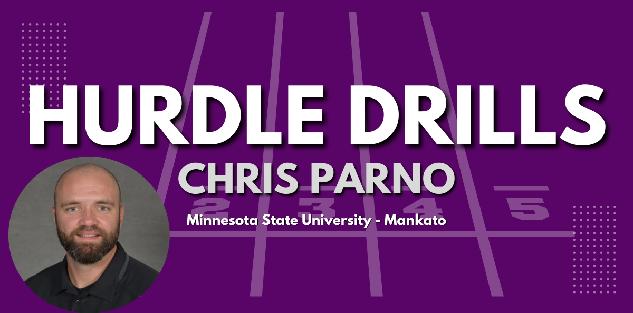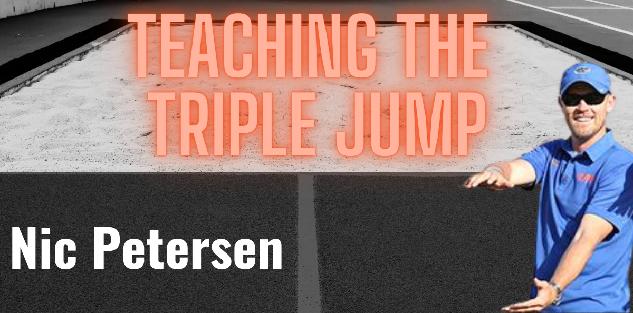Featured courses
- The Ultimate Guide to Coaching Track and Field by Jackson Chlebowy
- How TCU Coach Khadevis Robinson Builds Mental Toughness for Big 12 Track by William Markey
- Two Points of Focus When Coaching and Training Hurdles by Grant Young
- Four Keys to Maximize Winning Potential in a 400m Race by Grant Young
- Three Lessons Every Distance Running Coach Should Know by Grant Young
- Olympic Medalist Jasmine Moore’s Triple Jump Approach Technique Keys by Grant Young
- Build Strong Triple Jump Foundations with 3 Key Drills by William Markey
- Two Cues to Help With Track and Field Relay Handoffs by Grant Young
- Four Shot Put Drills to Help Develop Your Athletes by Grant Young
- Three Training Tips For Coaching 400m Runners by Grant Young
- Four Tips for Teaching the Javelin Throw by Grant Young
- 3 Pole Vault Check Points From Legendary Kansas Coach Tom Hays by Grant Young
- Two Valuable Hammer Throw Training Tips by Grant Young
- 3 Must-Try Offseason Shot Put Drills by William Markey
- Four Essential Tips For Coaching Track Relays and Sprints by Grant Young
- Florida Gators Coach Nic Petersen’s Two Keys for Teaching the Triple Jump by Grant Young
- Three Effective Drills for Improving the Long Jump by Grant Young
- Three Drills for Sprinters That Track Coaches Swear By by Grant Young
- Four Pole Vault Drills All Track and Field Coaches Should Know by Grant Young
- Explosive Track and Field Training to Level Up This Summer by Tyler Rathke
- Throwing Secrets: The Entry by Tyler Rathke
- How to Find an Endurance Athlete’s Proper Training Pace by Grant Young
- The Technique Behind Mykolas Alekna’s Discus World Record by Grant Young
- How to Build a Sprinter's Training Regimen by Grant Young
- How to Teach the Glide Shot Put by Grant Young
- Three Hurdle Drills All Track Coaches Should Know by Grant Young
- How Distance Running Coaches Can Get the Most Out of Their Athletes by Grant Young
- The Technique Behind Mondo Duplantis' Pole Vault World Record by Grant Young
- How to Coach Weightlifting For Increased Speed and Acceleration by Grant Young

How Distance Running Coaches Can Get the Most Out of Their Athletes
- By Grant Young
When it comes to coaching distance runners, there’s one obvious training method: make the runners run; the farther, the better.
But it shouldn’t be that simple if coaches truly want to maximize their athletes’ potential. Regardless of what level your athletes are at, you would be short-changing their progress if their daily training regimen only consisted of distance running. Not only would this contribute to these athletes feeling burnt out, but there are plenty of other training techniques that have been proven to help runners become the best version of themselves.
And one of the key figures driving this movement toward improved distance runner training is Jay Johnson.
Jay Johnson has coached collegiate, professional, and adult runners for two decades. Coach Johnson started his career as the head track and cross country coach at Pratt Community College in Pratt, Kansas, before returning to CU to serve as an assistant cross country coach, middle-distance coach, and recruiting coordinator. After eight years as a collegiate coach, Johnson transitioned to coaching post-collegiate athletes, three of whom won USATF titles, the most notable being Brent Vaughn, who won the USATF 2011 Cross Country championship.
Coach Johnson is deeply involved with high school running. His popular YouTube channel has close to 2,300,000 views, with runners of all ages using this resource to learn exercises and routines needed to gain the strength and mobility necessary to remain injury-free.
Coach Johnson’s ‘Consistency Is Key: Training Principles for Distance Coaches’ course has proven to be an indispensable training device for many professional, collegiate, high school, and youth track and field coaches.
We have pulled some of Coach Johnson’s best insights from his course and distilled them into easily digestible bits that will give you a taste of the training wisdom he can offer when it comes to making your distance runners the best they can be.
What To Train - Introduction
While there’s a lot that should go into long-distance running training, there’s no doubt that actually running long distances should be a central part of a team or individual’s regimen.
But the important part here that Coach Johnson stresses is that it isn’t good enough just to tell your runners to go run a random set of miles each day for practice. Rather, there needs to be structure (and a purpose) to each training session, even if it’s just distance running.
And the purpose should be to build up the runner’s anaerobic base (or, as Coach Johnson calls it, their engine). And there are lots of different ways to do this that aren’t just a typical long-distance run every day.
One example of this is what Coach Johnson calls a “critical velocity run”. While this might sound like a complex concept, what it essentially means is a timed run where the runner’s goal is to run at the same pace throughout.
In order to achieve this, the runner would need to be checking their pace at set intervals (say, every five minutes), and try to maintain a running pace there she wouldn’t lose any time every five minutes.
This is going to take time for the runner to perfect. But if this becomes a weekly part of the long-distance training routine then it can become a huge asset in building up a runner’s anaerobic endurance.
Run Race Pace (or faster)
“This is the second biggest mistake I see athletes and coaches make. Kids have to be ready to run race pace. Training a touch faster is important, but also, you need to have a progression of strides.” - Coach Johnson
The first mistake that Coach Johnson alluded to in that quote is when high school athletes are not running strides most days. And he notes that the second biggest mistake made is not practicing race pace enough.
While an athlete building their engine and strengthening their aerobic endurance should be a crucial component to one’s distance training, the lungs aren’t the only part of the body that needs to build stamina.
A runner’s legs also must be trained up. And there’s no better way to get one’s legs acclimated to running at race pace than running at race pace.
Of course, this will take time to build up, and runners should not try to be running at race pace at their race distance on day one of training. But Coach Johnson notes that doesn’t mean a 400 or 800m runner can’t run 50 meters at race pace in the first week of practice just to get that race-like feel, and increase the distance from there.
Remember To Sleep
“Sleep is like a secret ingredient in the recipe of running success.”
We’ve all been told countless times how important sleep is for our health and overall well-being. And Coach Johnson asserts that this is even more paramount for a distance runner.
Coach Johnson suggests that a distance runner (or any athlete, for that matter) should be getting at least 8 hours of sleep every night. In order to ensure this happens, he believes the best course of action is to work backward.
First, a runner should figure out what they must wake up in the morning. From there, the athlete should figure out what’s (at least) eight hours before that wake-up time and plan to be in bed, trying to sleep, at that point.
It might sound like a long shot that a coach can convince their athletes to go to sleep at 9 PM on a weeknight. But Coach Johnson claims that if any of those kids are willing and receptive to doing so, then those are almost certainly going to be your future champions and record-breakers.




